As we all know, the marketing industry often comes up with buzzwords that get marketers overly excited.
As the days of ‘Dear Sir/Madam’ are hopefully past us, personalization has gone from buzzword to a real industry focus. While many marketers claim that they use it, our 2017 Email Marketing Census has revealed that most are far from 100% personalization. Only a fair few truly use it to its full potential by tailoring content and offers to behavior, demographics and preferences, or stage in the lifecycle. But what is important is that 66% have chosen better personalization as the key focus this year and that puts them on the path to First-Person Marketing.
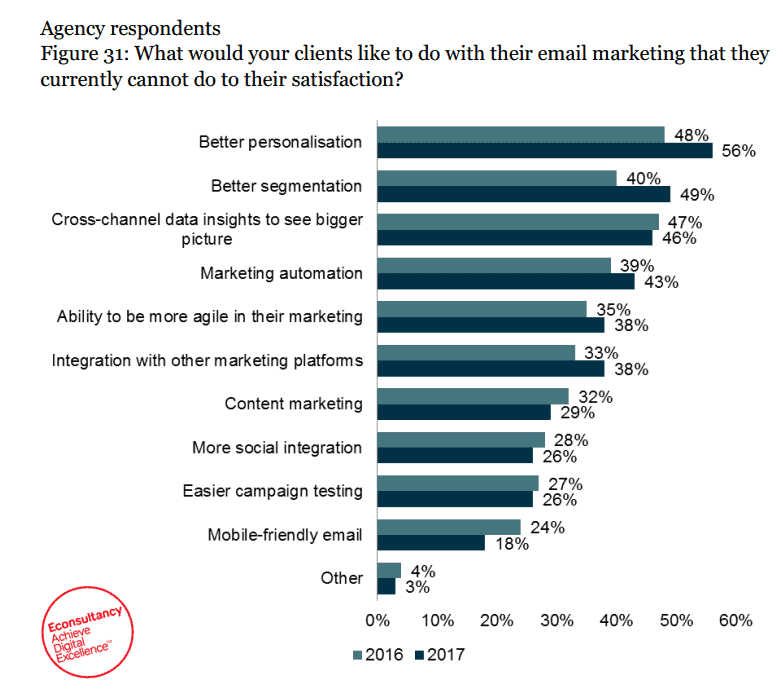
Moreover, the Census has shown that 71% of companies that are using advanced personalization report either ‘good’ or ‘excellent’ ROI, compared to only 35% who are not yet using it. Given these statistics, can you really afford to be missing out?
Admittedly, both agencies and in-house marketing teams agree that there are some challenges with trying to create highly personalized emails. Top of the list are ‘integrating data’, ‘lack of resources and time’, as well as technology shortfall.
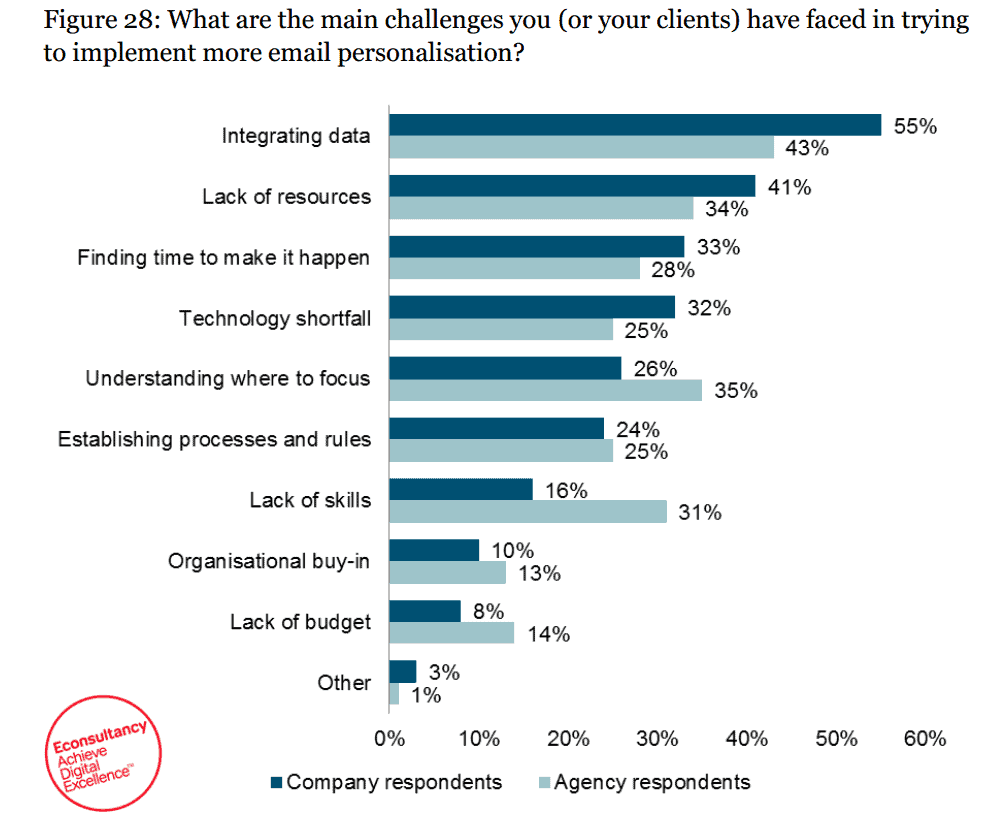
However, there are a plethora of options that can help with some of these barriers. By using conditional or dynamic content, as well as introducing real-time content which updates the email based on external factors such as time, location, and/or device, you can truly tailor the look and feel of each campaign. In addition, XML or remote content feeds can help ensure that you are sending the most targeted and relevant information to your customers.
Here are my top three reasons why you should personalize your communications.
1. Personalisation can increase ROI
Our 2016 State of Personalization Study with the IDM revealed that marketers recognized a connection between personalization and email KPIs. 63% of respondents agreed that personalization is ‘extremely’ or ‘somewhat effective’ at delivering email KPIs. Looking specifically at the revenue KPI, 56% of marketers believe that it can increase sales.
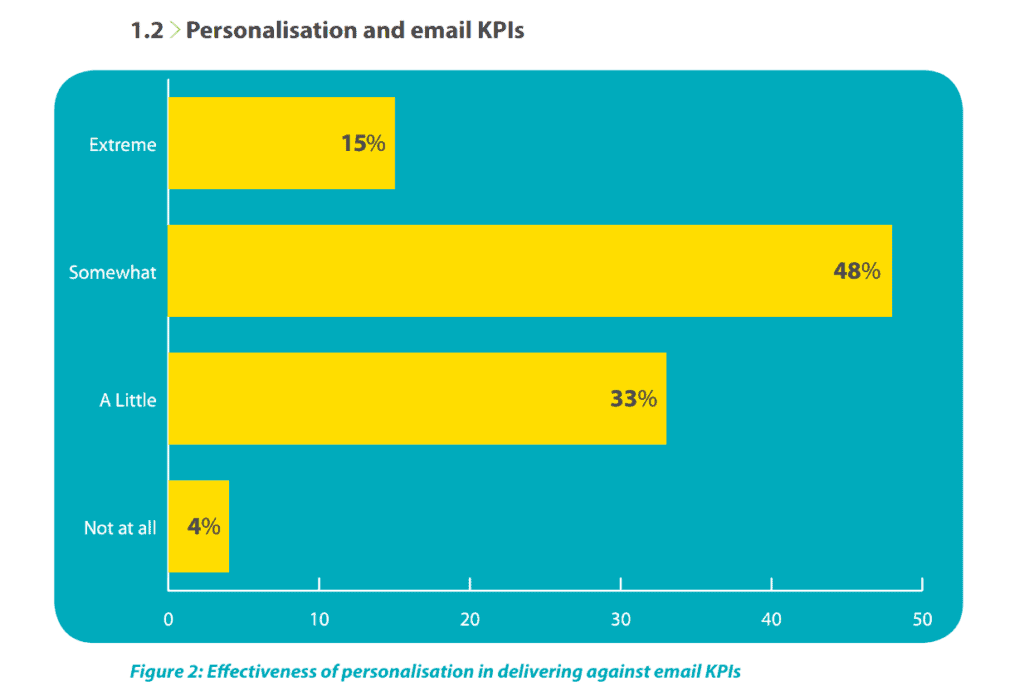
How? One easy way to increase ROI through personalization is by using product recommendations following a sale. In email, this can be successfully achieved through XML feeds that enable you to suggest products which may be similar or linked to the item the person has just bought. Serious Sport, the UK’s number one personalized sports clothing company managed to do this flawlessly. With the help of the Adestra Professional Services Team, they created an email that is uniquely personalized for each customer at the point of open. Through an XML feed, each campaign included three products based on the most recent purchase, customized with the customer’s club name and logo. This resulted in an outstanding average open rate of 59%, which was a 146 % uplift on their average campaigns, and an average click to sale rate of 9%.
2. Personalization will help raise customer engagement
Marketers that have used personalization in their campaigns believe that it has wide-ranging positive effects, 82% linking it to an increase in open rates and 75% to higher click-through rates. Even more interesting is that 40% of respondents think it also leads to a decrease in unsubscribes. The explanation for this is very simple: by sending customer emails which are tailored to their likes, dislikes, profile information and overall behavior, they perceive the content to be relevant so they are less likely to become uninterested and unsubscribe. And First-Person Marketers always think with their consumers in mind.
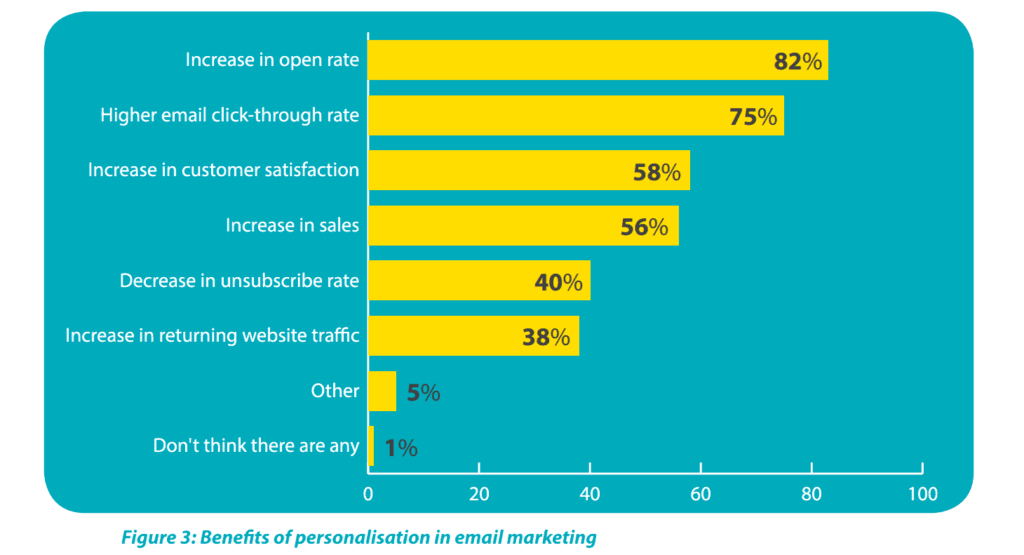
Infinity Nation and Meteor Electrical, our 2016 Campaign of the Year winners, used system integration, conditional content, and customer data to deliver an email with an impressive nine points of personalization. They not only re-engaged previous customers and persuaded them to purchase again, but proved that true one-to-one communication can drive incredible results. The campaign was automatically sent to customers using these points of data:
- their account creation anniversary date
- side image with candles and the numbers of years celebrated
- actual date in a user-friendly format
- purchase history
- whether the last order was placed online or over the phone
- last visit to the website
- flexible discount code
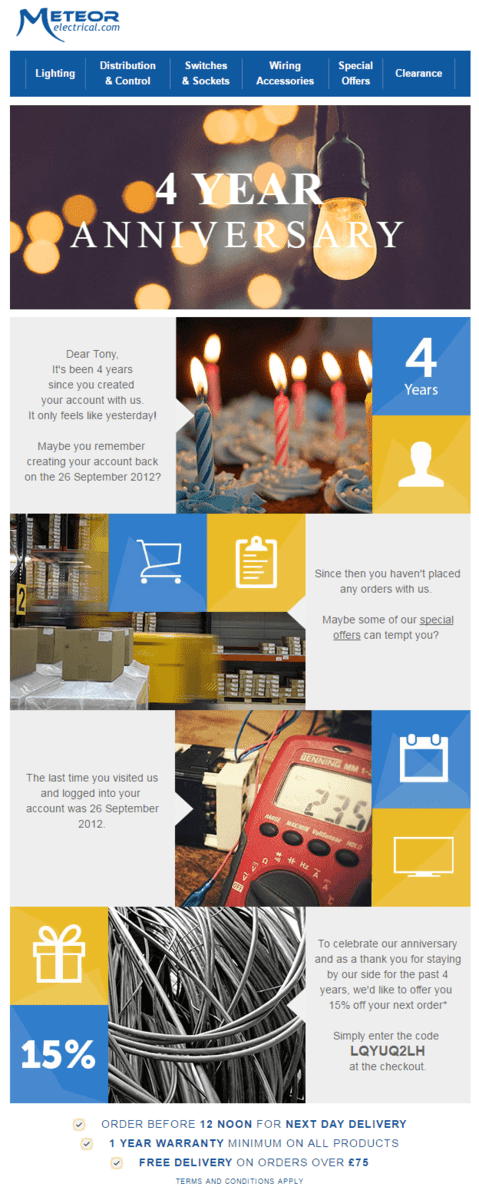
The email achieved an astonishing 177% higher open rate than regular newsletters and an average revenue of £106 per re-engaged customer.
This shows how personalisation can impact open and click-through rates and, more importantly, set a standard that subscribers expect from your communications, helping you stand out in the inbox.
3. Personalization and the overall customer journey
Aside from personalization, the Census has revealed that automated campaigns are the second main area of focus for marketers in 2017. There are a lot of benefits to automation, some of these include:
- Saving time by reducing manual tasks
- Sending communications instantly based on triggers
- Sending messages to a smaller segment to which the message is relevant
These benefits have led to increases in open rates and click rates, so combining both automation and personalization should be the ultimate goal, right?
Future Publishing conceived an customer journey orchestration program that sent follow-up emails based on customer clicks. The initial campaign asked their audience to choose their favorite movie or TV series. Based on which option was clicked, they would get a follow-up campaign with content that pertained to their particular subject. Future used a system of filters that considered the behavior of their subscribers to serve relevant content. Moreover, people that had not opened the original email were sent a campaign that contained their most popular Film & TV guides. The automation program achieved a 30% click-to-open rate and a remarkable 71% average open rate.

This was a direct result of their impeccable strategy, their consideration for their customers’ interests and the overall customer journey. There are a variety of ways of using both automation and personalization as part of First-Person Marketing, yet the customer experience should, without doubt, be the starting point for your strategy.
And these are just a few of the benefits of personalizing your emails. As with anything, there are bound to be some challenges to creating highly targeted and tailored emails, yet the benefits will make it worthwhile. We have a wealth of resources to help you overcome them no matter what aspect of email you find challenging and a team of really passionate and knowledgeable Account Managers should you need more advice.
Key takeaways:
- One-to-one communication is something customers have come to expect.
- Cross-promotion can easily be achieved through product recommendation.
- Personalization can help increase open and click-through rates, but more importantly reduce the likelihood of unsubscribes.
- If you are creating an automation program, the overall customer journey must be your main focus – consider where your customer is in the cycle and personalize accordingly.
- Finally, think about your message and how each point of personalisation can help you deliver it.
